10 of the Most Common Aboriginal Art Symbols Bluethumb Art Gallery
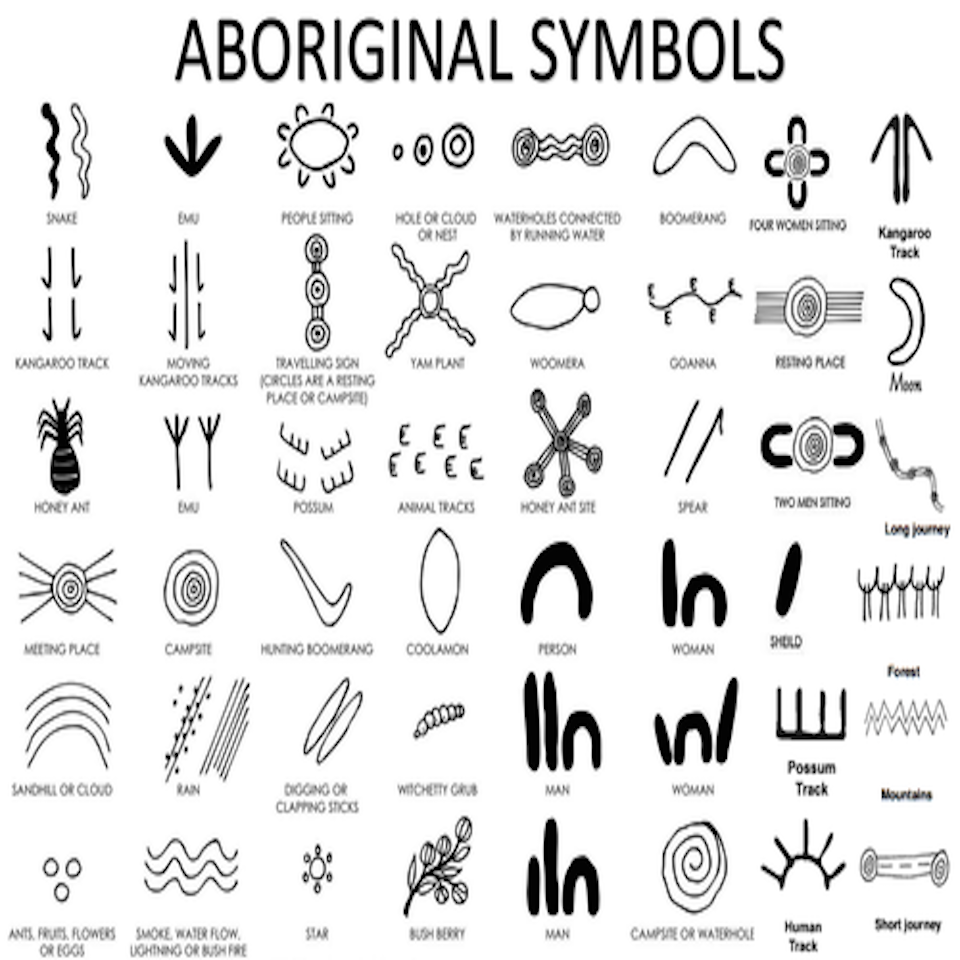
Australian Aboriginal Art
Yam plant. The yam plant is depicted in many Australian Aboriginal paintings. It is a staple source of food, and the symbol shows its extensive root system. Women collect and pay homage to it during ceremonies. These symbols have been found in National Parks as well. The meanings and interpretations could change slightly in different regions.

Coloured symbols of Australian aboriginal art Download Graphics & Vectors Aboriginal art
Most symbolism in Aboriginal Art focuses on the Dreamtime, which is the period in which Aboriginal people believe the world was created. Traditionally, symbols of the Dreamtime events were created on cave walls, carved into timber or stone, on the desert floor, and on their bodies with the use of body paint. Dreamtime art focuses on ancestors.

As we have seen, circles in Aboriginal art are far more than just mere shapes or patterns. They hold deep cultural significance and represent the interconnectedness of all things in Aboriginal culture. The meanings behind circle symbols can vary, but they often represent ancestral spirits, important cultural sites, and the cyclical nature of life.
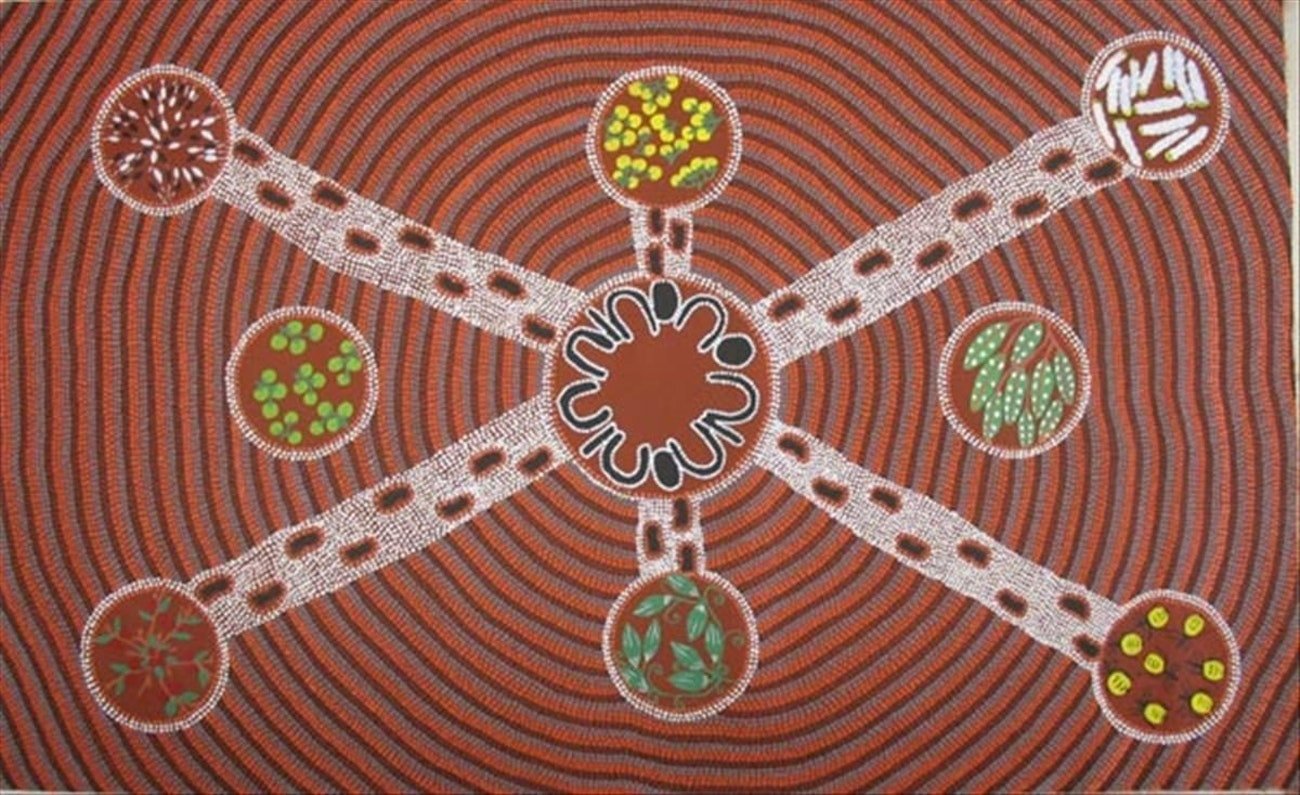
10 of the Most Common Aboriginal Art Symbols Bluethumb Art Gallery
Aboriginal Art Symbols #10: Bush Tucker. Food is at the heart of every culture, and Aboriginal stories are no exception! Bush onions, potatoes, tomatoes, bananas - they are all types of bush tucker waiting to be gathered and grazed on! This food is native to Australia and is part of the culinary delights for Aboriginal Australian people.

australian aboriginal symbols Google Search Aboriginal art symbols, Aboriginal symbols
Australian Aboriginal art is one of the oldest continuing art traditions in the world. Much of the most important knowledge of aboriginal society was conveyed through different kinds of storytelling—including narratives that were spoken, performed as dances or songs, and those that were painted.

an artistic painting on the wall with animals and flowers in it's center,
A symbol or combination of symbols can be used to represent an abstract idea, an action, person, place, ceremony, word, object, mood, emotion, story, life or death, anything. And while the symbols suggest the storyline your mind experience, and imagination personalises the message. Symbolism in aboriginal art also includes the colours and.
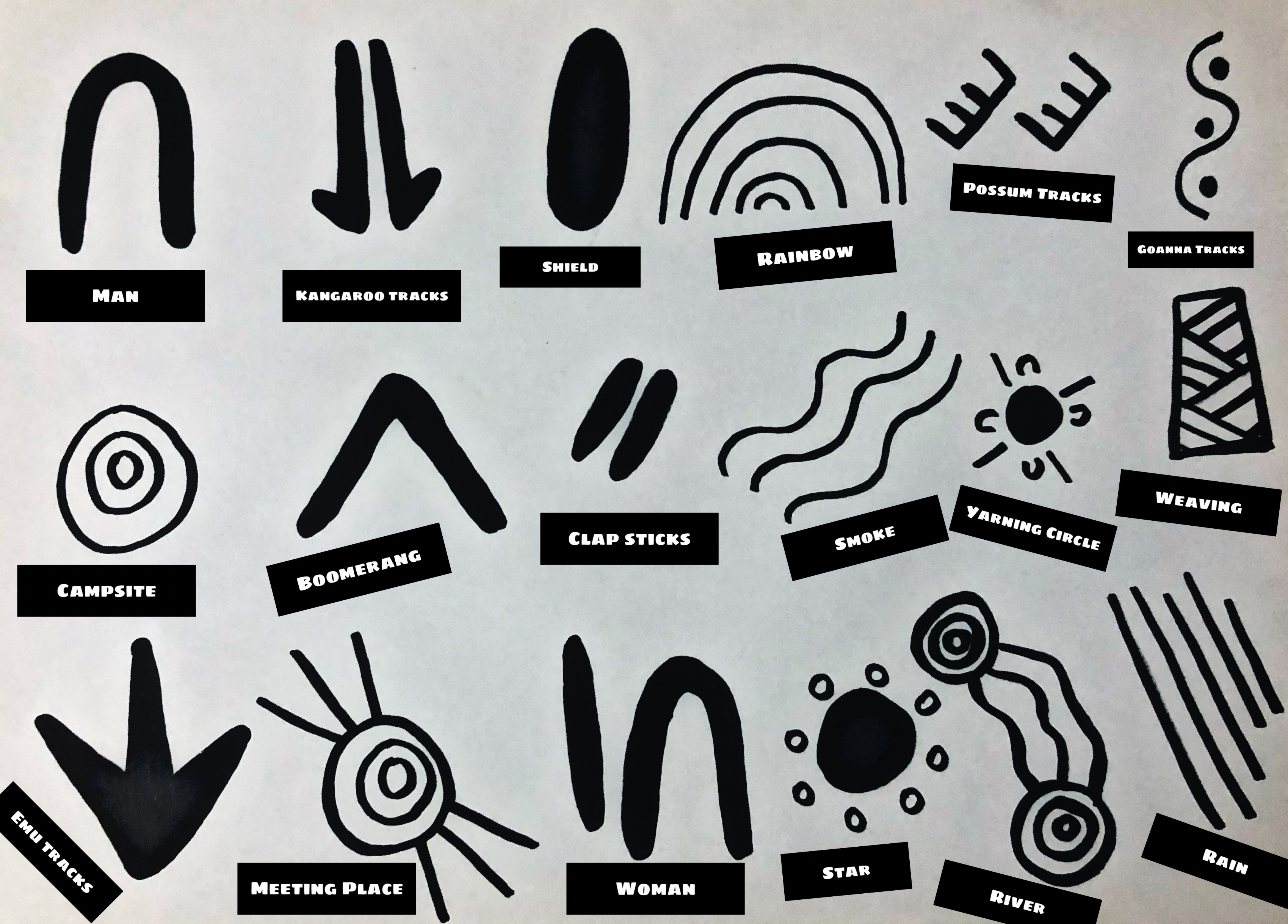
Aboriginal Art Symbols aboriginalart aboriginal indigenousaustralians australia art
Australian Aboriginal Art Symbols and their Meanings. David Wroth, Director of Japingka Aboriginal Art Gallery, provides a perspective on the use of symbols in Aboriginal art, and introduces Indigenous Australian artists talking about how they use symbols in their own work. Most people will recognise Aboriginal art symbols as being an integral.

Symbolism in Australian Indigenous Art Aboriginal art symbols, Aboriginal symbols, Aboriginal
Over the centuries, Australian First Nations conveyed their specific Dreaming on various surfaces, from wood to stones and bodies. As a result, you can find historical Aboriginal artworks in museums other than paintings: often boomerangs, didgeridoos, and shields carrying typical symbols, patterns, and colors.
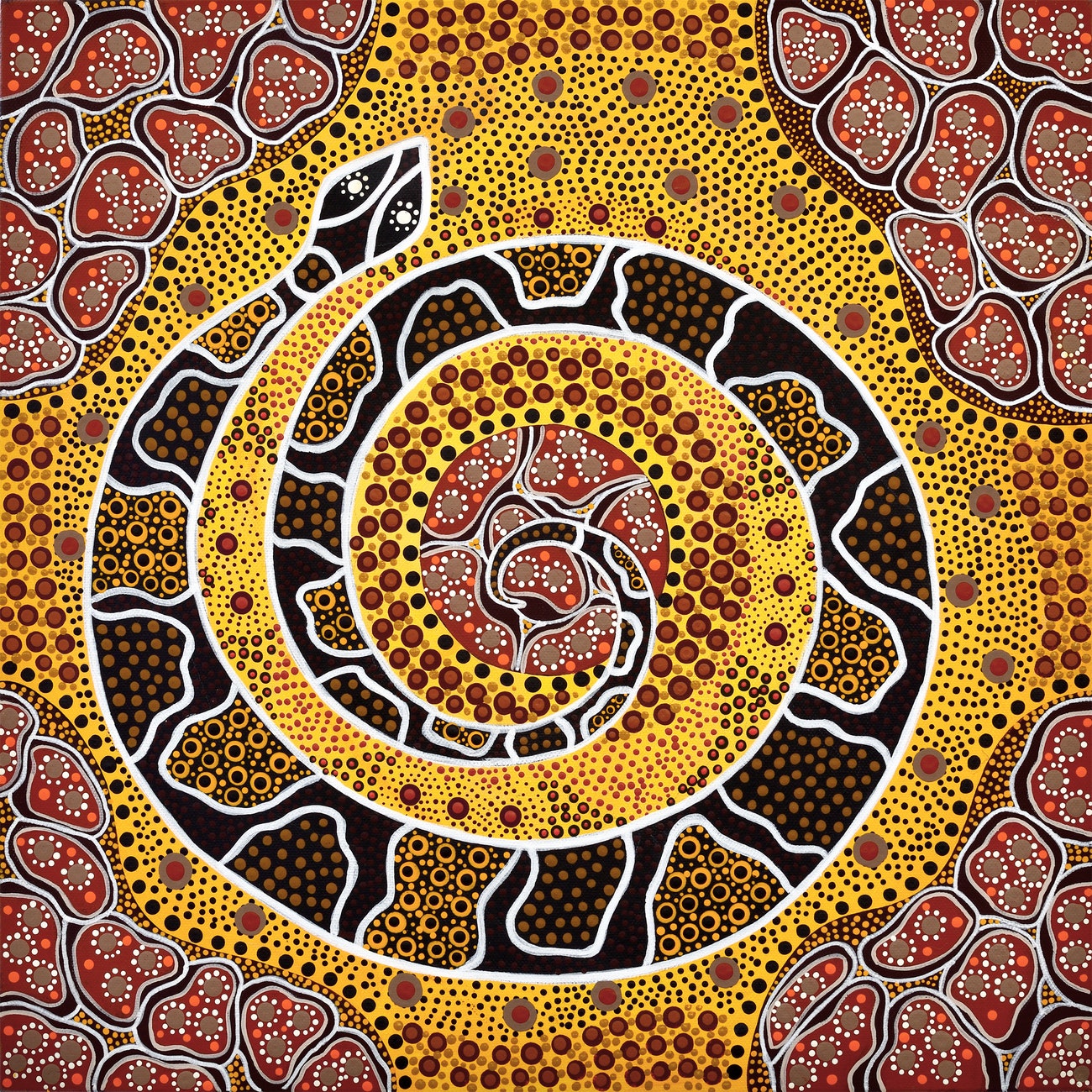
10 of the Most Common Aboriginal Art Symbols Bluethumb Art Gallery
Explore the rich history and symbolism of Australian Aboriginal art symbols, from the Dreamtime to contemporary interpretations.. #AboriginalArt #Symbolism #Dreamtime. Australian Aboriginal art is a fascinating and complex form of artistic expression that has been around for thousands of years. One of the most interesting aspects of this art is the use of symbols, which are rich in meaning and.

INDIGENOUS SYMBOLS & MEANINGS Aboriginal art symbols, Aboriginal dot art, Aboriginal symbols
Australian Aboriginal Art is one of the world's oldest surviving art forms, with a history dating back over 60,000 years. It is a visual language that communicates stories, traditions, and beliefs of the Aboriginal people. The symbols used in this art form have a deep cultural and spiritual significance, and each symbol tells a unique story.

an orange painting with black and white designs on the bottom, depicting two lizards in a spiral
Discover the rich cultural heritage of Australia's Indigenous peoples through their intricate symbols and meanings. Learn more here. Australian Aboriginal symbols and their meanings are a fascinating window into one of the world's oldest continuous cultures. These symbols have been passed down through generations of Indigenous Australians and are still used today in art, storytelling, and.

Aboriginal Art Symbols Aboriginal art symbols, Aboriginal art dot painting, Aboriginal dot art
Symbols Were a Part of Aboriginal Art to Communicate the Story of the Lives. By Kenth A Bender 2013. Every Symbol Tells a Story. Aborigine Art symbols are used in different art forms to relate the stories of their history and culture. Aborigine artists use symbols like curved and straight lines, dots and circles which have different meanings depending on their context.
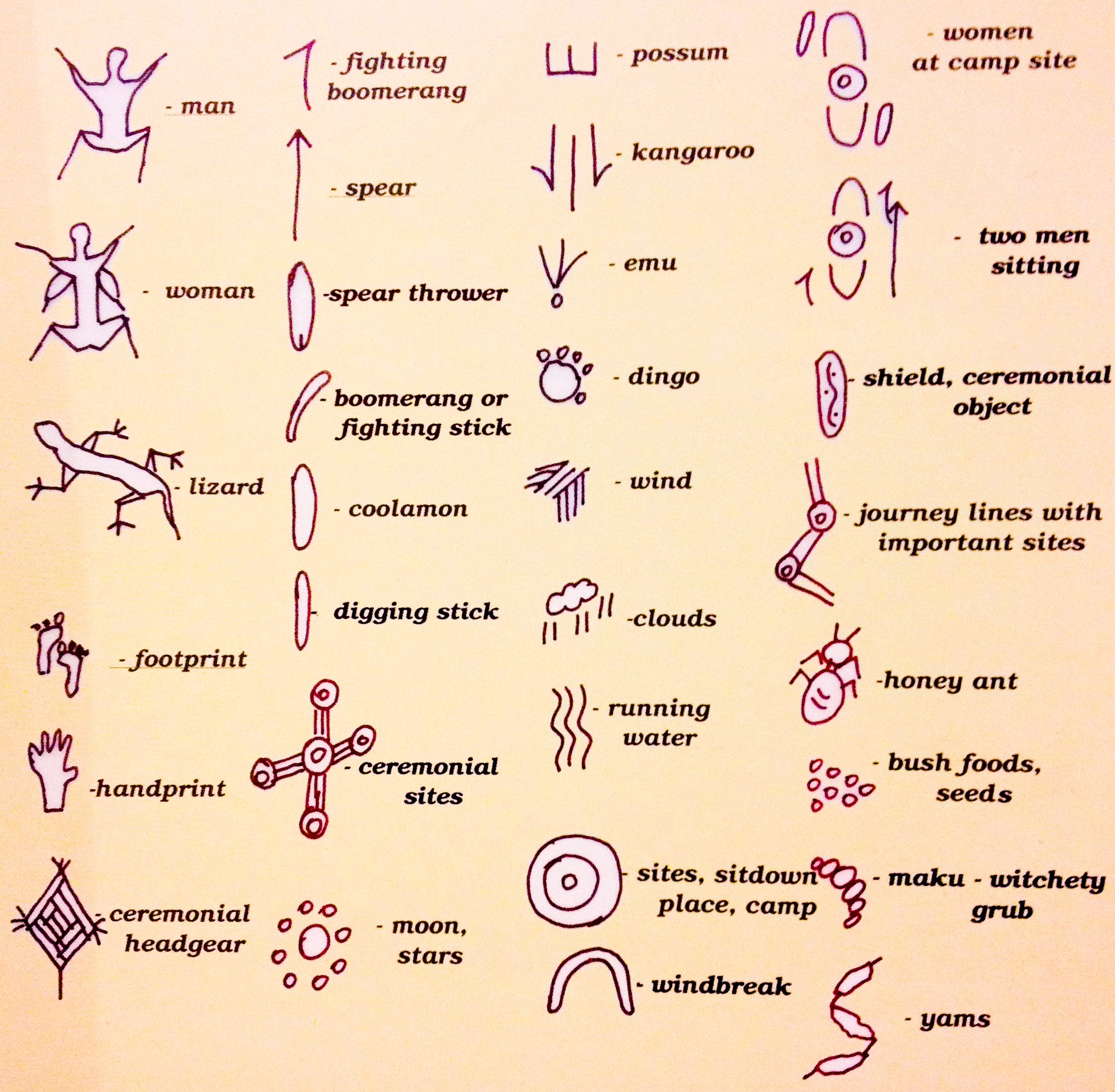
Symbols Aboriginal art symbols, Aboriginal art, Indigenous art
The Birth Of "Contemporary" Indigenous Art. In 1971, a school teacher named Geoffrey Bardon was working with Aboriginal children in Papunya, near Alice Springs. He noticed whilst the Aboriginal men were telling stories they would draw symbols in the sand. He encouraged them to paint the stories onto canvas and board.

10 of the Most Common Aboriginal Art Symbols Bluethumb Art Gallery
Australian Aboriginal Art is the oldest, unbroken tradition of art making in the world.. Certain symbols within the Aboriginal modern art movement retain the same meaning across regions although the meaning of the symbols may change within the context of a painting. When viewed in monochrome other symbols can look similar, such as the.

Australian Aboriginal Art Symbols & Their Meanings Japingka Gallery Aboriginal Art Animals
Common Australian Indigenous Symbols People. The curved U shape is a widely used icon in Aboriginal art and symbolises a person. It represents the shape that is left on the sand when a person sits cross legged. The marks that are placed either side of the human symbol can define whether it represents a male or female.

The use of symbols is very prominent in Australian Aboriginal art, and goes back to their
The oldest known aboriginal art in Australia is approximately 60,000 years old. And while there have been many forms of aboriginal art since that time, a few traditional meanings remain constant. The red ochre paintings of ancient aboriginal cultures signified blood; yellow ochre symbolized sand or sunlight; white paint meant water.